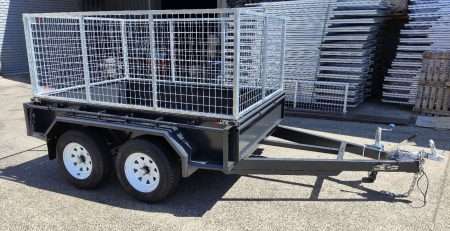Protect Your Engine: Unleash the Power of an Engine Coolant Flush
Understanding Engine Coolant
Before diving into the specifics of an engine coolant flush, it’s essential to understand what engine coolant is and the role it plays in your vehicle’s performance. Engine coolant, also known as antifreeze, is an integral part of your vehicle’s temperature regulation system.The Role of Engine Coolant
Engine coolant is a glycol-based liquid that circulates between the engine and the radiator, maintaining the correct temperature and preventing corrosion or freezing. As the engine operates, it generates heat. The coolant absorbs this heat and is then redirected back into the radiator, where it cools down to repeat the process. This cycle helps maintain optimal engine temperatures, thus preventing overheating and engine damage.However, over time, the coolant can become acidic. This acidity can lead to rust and damage to the engine and radiator, jeopardising the entire cooling system. Common signs of this include overheating and inefficient gas mileage. Regularly checking your coolant and considering an engine coolant replacement can prevent these issues and keep your engine running smoothly.Different Types of Coolant
There are several types of coolant available, each with different chemical compositions and properties. The type of coolant your vehicle needs depends on its make and model. When selecting a coolant, it’s crucial to refer to your vehicle’s owner’s manual or consult with a professional to ensure you’re using the right one for your specific vehicle.Regardless of the type, a crucial aspect of maintaining your vehicle’s performance and longevity is regular coolant changes. Recommendations vary, with some service centres suggesting changes every two weeks, while others recommend every 30,000 miles or five years (J.D. Power).Understanding the role and types of engine coolant is the first step towards maintaining your vehicle’s engine and ensuring its optimal performance. In the following sections, we will explore the importance of a coolant flush, the signs your vehicle may need one, and the process involved.The Importance of Coolant Flush
Just like your body needs fresh water to stay hydrated, your vehicle needs regular coolant flushes to keep its engine running smoothly. Let’s go through the benefits of a regular engine coolant flush and the risks of neglecting this important maintenance task.Benefits of a Regular Coolant Flush
Performing an engine coolant flush every 2 to 5 years, or every 30,000 to 50,000 miles, can significantly improve the performance and longevity of your vehicle’s engine. Here are some key benefits:- Removes Contaminants: Over time, rust, scale, and sludge can accumulate in the cooling system. These contaminants can affect the performance of the cooling system and ultimately damage the engine. A coolant flush helps to remove these contaminants, keeping the cooling system clean and efficient (Heart Auto Care).
- Prevents Overheating: Coolant flushes can prevent damage to the cooling system and engine by keeping the system clear of debris. This ensures proper heat balance to prevent engine issues.
- Protects Engine Parts: Fresh coolant can help protect important engine cooling system components like hoses and coolant lines from wear and tear.
- Improves Vehicle Performance: With a clean cooling system and fresh coolant, your engine can operate more efficiently, improving overall vehicle performance.
Risks of Neglecting Coolant Flush
Just as there are numerous benefits to regular coolant flushes, there are also risks associated with neglecting this important maintenance task.- Engine Damage: Neglecting to flush the engine coolant can lead to overheating, engine damage, and costly repairs (Heart Auto Care).
- Increased Repair Costs: If contaminants accumulate in the cooling system and cause damage, you may face expensive repair costs. Regularly scheduled inspections, maintenance visits, and tune-ups can help detect engine issues early on and prevent costly repairs (Chapel Hill Tyre).
- Reduced Vehicle Performance: If your cooling system isn’t functioning efficiently due to an old or contaminated coolant, you may notice a decrease in your vehicle’s performance.
Recognising the Need for Coolant Flush
Being mindful of your vehicle’s needs and performing regular maintenance can save you from unwanted hassles and costly repairs. One of the key maintenance tasks that often gets overlooked is the engine coolant flush. Recognising the signs that your car needs a coolant flush and understanding the recommended frequency can help you keep your engine in top shape.Signs Your Car Needs a Coolant Flush
The health of your vehicle’s engine cooling system is crucial for its overall performance. Sometimes, signs that your car needs a coolant flush may be evident in the vehicle’s function, status, and performance. If something seems off, a coolant flush may be necessary.A coolant flush can prevent damage to the vehicle’s cooling system and engine by keeping the system clear of debris. This helps protect components like hoses and coolant lines. Not only that, but it also ensures proper heat balance to prevent engine issues.If you notice any of these signs in your vehicle, it might be time for an engine coolant flush:- Overheating engine
- Coolant leakage
- The engine is running rough.
- Visible rust or debris in the coolant
- A sweet smell is coming from the engine area.
- Poor fuel efficiency
Frequency of Coolant Flush
How often you need to flush your engine coolant can depend on various factors, such as the manufacturer’s guidelines, the type of coolant used, and the vehicle’s mileage. However, as a general guideline, coolant flushes are recommended every 2 to 5 years or every 30,000 to 50,000 miles.Neglecting to flush the engine coolant can lead to overheating, engine damage, and costly repairs (Heart Auto Care). Hence, regular inspections and maintenance visits can help detect engine issues early on and prevent expensive repairs. These affordable service visits can help keep the vehicle protected, especially in hot weather.Remember, an engine coolant flush is a small investment to make to ensure the longevity and efficiency of your vehicle’s engine. So, be proactive and schedule regular coolant flushes to keep your car running smoothly.Coolant Flush Process
Having a basic understanding of the coolant flush process can help car owners make informed decisions about their vehicle’s maintenance. This section will delve into how an engine coolant flush works and the differences between professional and DIY methods.How Coolant Flush Works
A coolant flush is a comprehensive cleaning process for your vehicle’s cooling system. It involves removing dirt, rust, and sludge that may have accumulated over time, which can hinder the performance of the cooling system and potentially harm the engine.The process typically begins with draining all the old coolant from the radiator and then injecting a specialised cleaning solution into the cooling system. This solution circulates through the system, dislodging and removing the accumulated debris.Once the system is clean, it’s thoroughly flushed with water to remove the cleaning solution and any remaining debris. Finally, the system is filled with fresh coolant, ensuring optimal performance and extending the lifespan of the cooling system components.Keeping the cooling system free of debris helps protect the engine by maintaining a balanced temperature, preventing overheating, and ensuring the efficient operation of engine cooling system components.Professional vs. DIY Coolant Flush
While it’s possible to conduct a coolant flush at home, there are several advantages to having a professional handle this task. A certified mechanic has the knowledge and equipment necessary to perform a thorough coolant flush and can inspect the cooling system for potential issues during the process. They can also dispose of the old coolant properly, which is essential as it’s harmful to the environment.However, if you’re a do-it-yourself enthusiast with the necessary knowledge and tools, a DIY coolant flush can be a cost-effective option. It’s crucial to follow the correct procedure and safety measures and to dispose of the old coolant responsibly.Whether you opt for a professional service or a DIY approach, regular coolant flushes are an essential part of vehicle maintenance. They can help detect engine issues early on and prevent costly repairs, particularly in hot weather (Chapel Hill Tyre).It’s essential to consult your vehicle’s owner’s manual or a professional mechanic to determine the recommended frequency for coolant flushes. Always prioritise the health of your vehicle’s engine and remember that preventive maintenance is often more cost-effective than repairs.After the coolant flush
After performing an engine coolant flush, it’s crucial to maintain the cooling system and stay vigilant for potential coolant issues. This will ensure that your vehicle runs smoothly and efficiently and can prevent costly repairs in the future.Maintaining the Cooling System
Keeping the automotive engine cooling system in tip-top shape is an essential part of vehicle maintenance. Regularly scheduled inspections, maintenance visits, and tune-ups can help detect engine issues early on and prevent costly repairs, especially in hot weather (Chapel Hill Tyre).Additionally, routine maintenance mileage is a good indicator of when a radiator fluid flush might be needed. On average, most vehicles require a radiator flush every 50,000–70,000 miles. However, it’s best to consult the owner’s manual for more specific information.Another aspect of maintenance is changing the coolant. According to J.D. Power, some service centres recommend changing the coolant every two weeks, while others suggest doing it every 30,000 miles or five years.Spotting potential cooling issues
It’s important to be aware of the signs that might indicate potential coolant issues. If engine coolant is not changed, it can become acidic, causing rust and damage to the engine. It can also lead to rust in the radiator and a potential disaster for the whole cooling system.Regular checks of the engine cooling system components, such as the radiator and coolant reservoir, can help identify issues at an early stage. Look out for signs such as coolant leaks, overheating, or a sweet smell coming from the engine, which could indicate a potential engine coolant leak.In conclusion, an engine coolant flush is an essential part of maintaining your vehicle. Regular checks and maintenance of the cooling system, as well as being vigilant for potential issues, can help keep your car running smoothly and prevent costly repairs. For more information on the cooling system and its maintenance, check out our articles on automotive engine parts and engine cooling system repair.Author
I am Rahatul Ashiq Tamal. Another author of Muscle Trailers. Muscle Trailers is a well-known trailer brand in Sydney, Melbourne & Adelaide

How to Mount a Spare Tire on Your Trailer: A Simple Step-by-Step Guide
Trailer service centers receive over 1 million phone calls and 1.3 million emails each year about trailer maintenance problems....

How to Fix RV Roof Leaks: Simple Roof Leak Detection Guide for Beginners
Did you know DIY RV roof repairs can cost under $50? But undetected leaks could lead to substantially higher repair...

Starting a Food Truck Business in Australia: From Trailer Selection to Launch
The Australian mobile food market has evolved into a billion-dollar industry. This makes a food truck...
All Department
